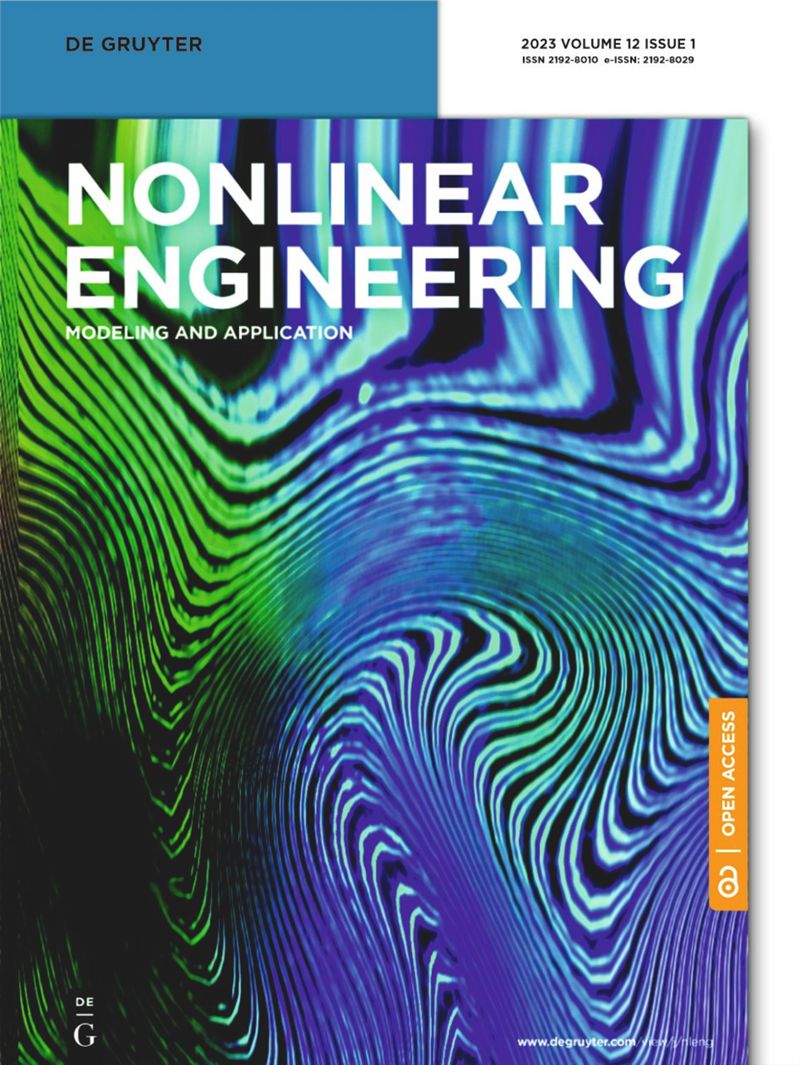Analysis of bridge vibration response for identification of bridge damage using BP neural network
IF 1.5
Q2 ENGINEERING, MECHANICAL
引用次数: 0
Abstract
Abstract In this article, the authors propose a method to identify the bridge damage using a backpropagation (BP) neural network. It uses bridge vibration response to solve the accuracy of bridge damage. A particle swarm optimization algorithm based on chaotic mutation is adopted to perform chaotic mutation operations and make the group jump out of the local optimum. CPSO (particle swarm optimization algorithm based on chaotic variation) algorithm can make up for the BP neural network model, easy to fall into the shortcomings of local optima, so the author will combine the two algorithms and discuss the environmental data of the bridge. Establishing a finite element model of the bridge through actual analysis, through data comparison, comparing the frequencies of the intact stages with the frequencies of the damaged stages, and verifying the neural network with random samples, for the degree of bridge damage, we get the root mean square error m s e mse and the correlation coefficient r. The result shows that the root mean square error m s e = 0.003196 mse=0.003196 , and the correlation coefficient r = 0.9654 r=0.9654 . There are only a few individual points; it seems that the relative error is relatively large. The rest of the fit is basically the same; it can meet the factors of vibration through the environment and perform damage identification for the structural damage monitoring of the bridge. Using the BP neural network model optimized by chaotic particle swarms, combined with the modal analysis of environmental vibration, it can be used in the monitoring of the health structure of the bridge, plays a certain recognition effect, and provides a new technical idea.基于BP神经网络的桥梁振动响应分析与损伤识别
摘要本文提出了一种基于BP神经网络的桥梁损伤识别方法。利用桥梁振动响应来解决桥梁损伤的精度问题。采用基于混沌突变的粒子群优化算法进行混沌突变操作,使群体跳出局部最优。CPSO(基于混沌变异的粒子群优化算法)算法可以弥补BP神经网络模型容易陷入局部最优的缺点,因此笔者将两种算法结合起来,对桥梁的环境数据进行讨论。建立一个桥的有限元模型通过实际分析,通过数据的比较,比较完整的频率阶段和破坏阶段的频率,并与随机抽样验证神经网络,对桥梁损伤的程度,我们得到均方根误差m s e mse和相关系数r。结果表明,均方根误差m s e = 0.003196 mse = 0.003196,和相关系数r = 0.9654 r = 0.9654。只有几个单独的点;看来相对误差比较大。其余的贴合基本相同;它能通过环境满足振动因素,对桥梁结构损伤监测进行损伤识别。利用混沌粒子群优化的BP神经网络模型,结合环境振动的模态分析,可用于桥梁健康结构的监测,起到一定的识别效果,并提供了新的技术思路。
本文章由计算机程序翻译,如有差异,请以英文原文为准。
求助全文
约1分钟内获得全文
求助全文
来源期刊
CiteScore
6.20
自引率
3.60%
发文量
49
审稿时长
44 weeks
期刊介绍:
The Journal of Nonlinear Engineering aims to be a platform for sharing original research results in theoretical, experimental, practical, and applied nonlinear phenomena within engineering. It serves as a forum to exchange ideas and applications of nonlinear problems across various engineering disciplines. Articles are considered for publication if they explore nonlinearities in engineering systems, offering realistic mathematical modeling, utilizing nonlinearity for new designs, stabilizing systems, understanding system behavior through nonlinearity, optimizing systems based on nonlinear interactions, and developing algorithms to harness and leverage nonlinear elements.

 求助内容:
求助内容: 应助结果提醒方式:
应助结果提醒方式:


